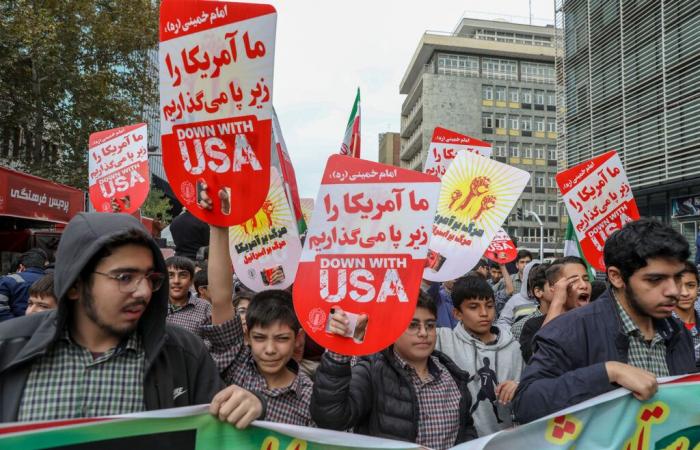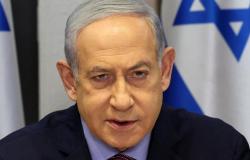To fully understand the Iranian regime’s foreign policy strategies for engaging with Trump, one must first examine the domestic situation in Iran and the strained relationship between the regime and its people.
State of the Iranian Society
Currently, executions in Iran have reached unprecedented levels. In October alone, one execution was carried out every four hours, with reports of one individual even being executed twice. Female prisoners are often not released even after completing their sentences. The soaring number of executions since the appointment of Massoud Pezeshkian as president last August underscores how Ali Khamenei, the Supreme Leader and religious dictator, is striving to maintain control in a highly volatile domestic environment.
In an article titled “We’re Cornered,” published on Sept. 10 by the Shargh newspaper, Hashemi-Taba, a former presidential candidate, expressed: “All signs indicate that we are cornered. This is not the fault of this government or that government … This gridlock is not solely due to U.S. and European sanctions, but even if today we were to court the U.S., accept FATF, and have the International Atomic Energy Agency leave us alone, this gridlock would still persist.”
The Iranian society is currently trapped in a web of severe economic and infrastructural imbalances. From water and electricity shortages to gasoline and other basic necessities, the nation faces widespread deprivation. Despite Iran’s vast natural resources—including oil, gas, and minerals—more than two-thirds of its population live in absolute poverty.
The regime’s fear of popular uprisings has only intensified since the 2019 protests, known as the “Fiery Uprising.” During that three-day revolt, the regime retained its grip on power only by massacring over 1500 protesters. Acts of desperation have followed: For instance, a war veteran in Kazeroon (Shiraz) assassinated Khamenei’s local representative before taking his own life. Recently, after enduring three years of imprisonment and torture, a former journalist for Voice of America committed suicide to protest the horrific conditions in Iranian prisons. These events reveal the profound and growing resentment among the people toward the regime.
The Iranian leadership is acutely aware of the potential for another uprising and fears it may not survive a new wave of mass protests.
Resolving Khamenei’s Succession Issue
Amid these internal crises, the regime faces a critical issue: resolving the succession of Khamenei before his death. Mojtaba Khamenei, his son, has been floated as a possible successor. The Assembly of Experts* has reportedly shortlisted three candidates for the position. However, if the succession issue remains unresolved, the regime could collapse rapidly after the ailing 85-year-old Khamenei’s death. According to recent surveys conducted within Iran, more than 90% of the population opposes the current regime, signaling an existential crisis.
Khamenei seeks to secure his son’s position as his successor even through presenting him as a “reformist figure” who could advocate for internal reforms and external diplomacy.
French philosopher Bernard Henri Levy states that the weakened mullahs’ regime has little choice but to re-engage with U.S. president-elect Donald Trump.
The regime is under mounting pressure from thousands of resistance units affiliated with the opposition People’s Moujahidin (PMOI/MEK)—the main component of the democratic alternative National Council of Resistance (NCRI) advocating for the separation of religion and state. Since 2019, the NCRI has seen unprecedented growth in both size and influence.
In this context, the Iranian ambassador’s meeting with Elon Musk on Nov. 11 may signal the regime’s last-ditch effort to mitigate U.S. pressure and halt the decline in oil exports, which had surpassed pre-sanctions levels under Biden but could plummet again under renewed maximum pressure.
Iran’s Oil Exports
The outbreak of the Israel-Hamas war on Oct. 7 raised immediate questions about how Hamas funded its attack on Israel. With extensive underground tunnel networks reportedly longer than Tehran’s subway system and weapons factories, the scale of the operation far exceeded Hamas’s independent capabilities. Tehran was widely suspected of being Hamas’s financial backer.
This placed the Biden administration under intense pressure to halt Iranian oil exports. According to the Advancesnewspaper, which is close to the Iranian government, as of Nov. 6,
“Iran’s oil exports in recent years have returned to pre-sanctions levels, while during Trump’s presidency, oil exports dropped to below 500,000 barrels per day, placing severe pressure on the oil sector [read: the regime].”
Negotiating from a “Position of Strength”
Proxy forces like Hezbollah in Lebanon and the Houthis in Yemen have long served as the regime’s leverage to extort the international community. However, these tools are now significantly weakened. Continuous bombings in Lebanon and Syria, key logistical bases for these proxies, have eroded their effectiveness. The regime is now urgently seeking a ceasefire in Lebanon to prevent the complete collapse of Hezbollah.
Proxy forces like Hezbollah in Lebanon and the Houthis in Yemen have long served as the regime’s leverage to extort the international community.
The Iranian regime recognizes that any negotiations with a Trump administration would require significant concessions, including curtailing its support for proxy forces and scaling back its nuclear enrichment program. However, such concessions, deeply tied to the regime’s identity and survival strategy, would likely hasten its collapse. To avoid this fate, the regime aims to negotiate from a “position of strength,” hoping to extract guarantees critical to its survival in exchange for any compromises.
Abbas Araghchi, Iran’s chief diplomat, articulated this strategy after meeting with Rafael Grossi, the head of the International Atomic Energy Agency (IAEA) visiting Iran. Posting on the platform X, he stated: “We are ready to negotiate based on our national interests and legitimate rights, but we are not willing to negotiate under pressure or intimidation.”
A newspaper aligned with the regime recently noted: “The likelihood of reaching an agreement with Trump is low unless Iran raises its enrichment levels to over 90%.”
Reaching 90% enrichment is a critical step toward acquiring a nuclear weapon. The question remains: Is the regime prepared to conduct a nuclear test at any cost to strengthen its bargaining position and ensure its survival?
Despite the formidable challenge of destroying underground enrichment facilities buried hundreds of meters below the surface, the U.S. and Europe have repeatedly and explicitly declared that they will not permit Iran to achieve nuclear capability. Crossing this red line would have irreversible consequences.
Conclusion
Even if the Iranian regime were to successfully test a nuclear bomb and acquire a deterrent weapon, history demonstrates that such measures cannot prevent internal collapse. The Soviet Union, despite possessing an array of nuclear warheads, ultimately succumbed to widespread public dissatisfaction and systemic failures.
The Iranian regime faces a similar dilemma: its reliance on repression, nuclear brinkmanship, and proxy forces may buy it time, but cannot address the underlying grievances of its population. Unable to pursue genuine reforms, its survival remains precarious.
Notes
*The Assembly of Experts: This body, composed of qualified clerics, is responsible for selecting, dismissing, and overseeing the leader of the Islamic Republic of Iran, as stipulated in Article 107 of the Iranian Constitution.
Hamid Enayat is a political scientist, specializing on the topic of Iran, who collaborates with the Iranian democratic opposition.






